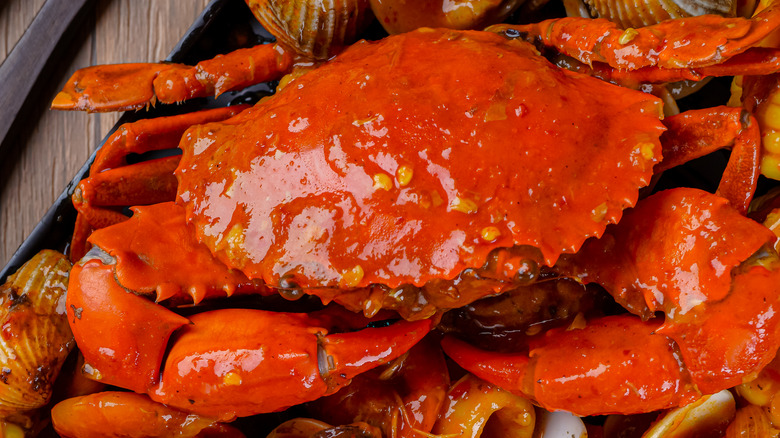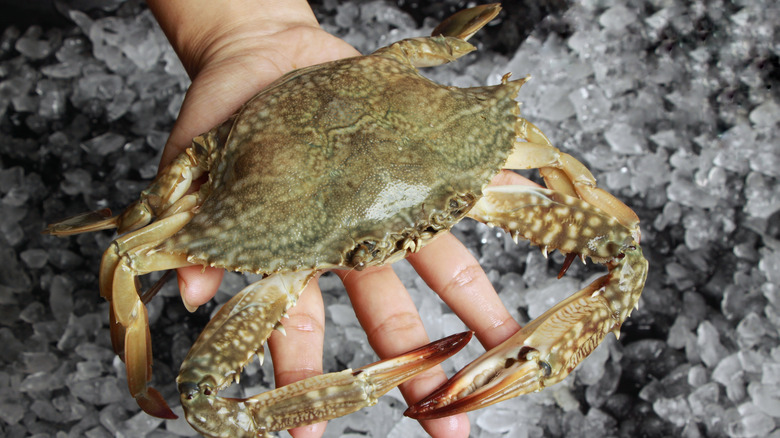The Real Reason Crabs Turn Red When Boiled
Let's face it, as much as we know that lobsters, crabs, and shrimps are bottom feeders in the ocean, they taste amazing, and we simply cannot give them up. These crustaceans are positively delicious, though they look quite a bit different on a plate than they do in their natural habitats, namely where their shell color is concerned.
If you've ever seen a living lobster, prawn, or crab, you probably noticed that they tend to be more of a neutral color, like a muddy brown, grayish-hue, or something similar. The reasoning for this, according to The Conversation, is to help these crustaceans avoid predators by better blending into the background, aka the seafloor. These dark exoskeletons change into a bright red when they're cooked because of certain chemicals that react with heat, but it's a bit more complex and interesting than just that. One chemical, a pigment called astaxanthin, is what gives crabs their bright red hues once they're boiled.
The chemical is released and the colors appear
Astaxanthin is a member of the group of pigments that give many animals their orange, yellow, and red coloring, according to The Conversation. "When the crustaceans are alive, the astaxanthin is tightly wrapped up and trapped by a special protein called 'crustacyanin.' This is why live crabs and prawns usually look bluish-gray." While the pigment is still trapped by the protein, the colors don't appear, but heat breaks down crustacyanin, releasing the astaxanthin and giving the crabs their vibrant red hues. "In fact, the degree of color change tells you if the seafood is properly cooked. If it's not red enough, it's probably not cooked enough," per The Conversation.
As it turns out, astaxanthin is what gives flamingos their pink coloring, because they eat a lot of prawns, per Mental Floss. The crustacyanin is broken down in the flamingos' stomach acid, releasing the pigment that gives the birds their distinctive pink look. It may seem strange, but sometimes nature is more interesting than we give it credit for!

